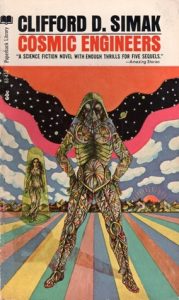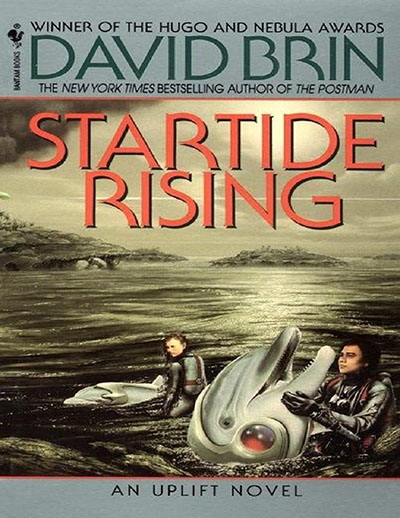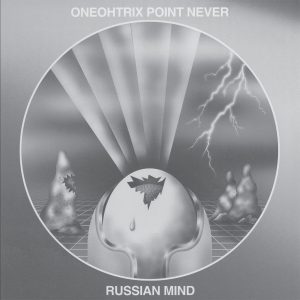I chose this book because it was my favorite cover art of any of the books I had seen in The Green Hand, and I wanted to read more of Simak’s work. I absolutely love the bright colors, the mountain range in the background and the cute little planet right of the robot’s head. I would absolutely draw something like this background, so naturally I had to read the book. I just the wish the story had as much personality as the cover. The story follows a group of humans, most notably two space journalist Herb and Gary and a woman, Caroline, who they woke from suspended animation. Caroline was aware throughout her 1,000 years in suspended animation and spent the time training her brain and developing new concepts about spatial relativity and the physical nature of space. The humans are called to by a group of robots, the Cosmic Engineers, who are trying to protect the universe and need the help of beings with creativity (something they don’t possess). Together the humans and Cosmic Engineers, well it was mostly Caroline, they prevent two universes from colliding, stop the bad guy aliens and go home happy.
This story is an optimistic space opera written in the Golden Age of SF and contains a multitude of interesting SF elements. Some interesting elements include the idea of robots outliving their creators but remaining devoted to them, the concept of humans abandoning Earth, anti-government and pro-individualism. The evil aliens in the story are a thinly veiled allegory for wither German National or Soviet Socialism. From the anti-collectivist sentiments and glorification of humanities’ creativity and brave heroism, is evident that the author was writing this story as an American 1964.
I’ll start with my favorite aspects. The main scientist is a woman who not only saves our universe but saves another universe and actually creates universes. She is far from the damsel in distress that most stories in the Golden Age of SF portray. I also loved the optimistic and positive portrayal of humanity. So much SF reveals the ugly flaws of humanity or imagines alien races that are far superior. Yet in this story, humanity is refreshingly celebrated as uniquely creative and adventurous. However, it could be a little hard to get through. The characters are flat, and the plot just chugs forward without any tension to keep the reader engaged. I got lost in the inconsistent details of the plot and accidentally ended up skimming some parts. There just wasn’t any depth or sentiment in the writing.
I looked at the publication page and it turns out this was originally a short story that Simak wrote in 1939 but he adapted it into a novel. I think it should have stayed a short story and I would be interested in reading it. However, I am not sure I would recommend the novel and would perhaps direct people to some of Simak’s better, richer writing. I am frustrated because the concept of a genius woman saving the universe and celebrating humanity is something I love. But I guess you really can’t judge a book by its cover; for such lively and colorful cover art, the story was grey.
Simak, Clifford Donald. Cosmic Engineers. Paperback Library, 1970













